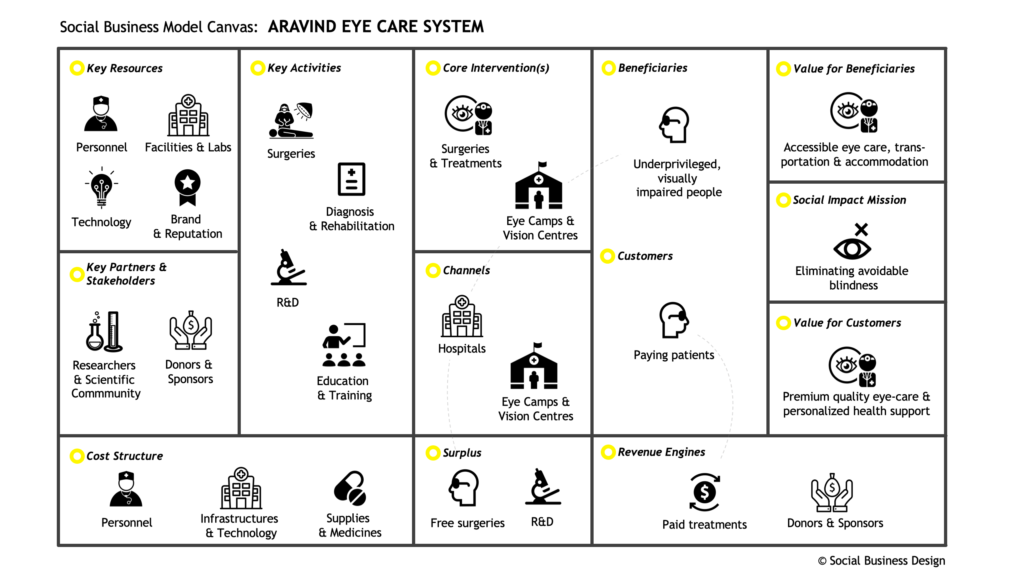
Aravind Business Model
Eradicating needless blindness in India
It’s 1976 when Dr. Govindappa Venkataswamy (popularly known as “Dr. V.”) asks himself a simple question: “how to eliminate needless blindness in India, regardless of patients’ ability to pay for the treatments?”. With this mission in mind, Aravind‘s first eye clinic was inaugurated in Madurai, Tamil Nadu.
44 years later, Aravind Eye Care System is comprised of multiple eye care hospitals, a research institute, an ophthalmic manufacturing unit, eye banks and training/consulting institutes. This conglomerate is considered one of the most efficient eye-care institutions around the world, with over 400,000 eye surgeries performed each year (most of them free of charge).
But how was it all even possible?
Problem in context
According to WHO, in 2010 around 285 million worldwide were visually impaired. India alone had the largest blind population, with over 15 million blindness cases: 75% were considered to be avoidable. Today, experts agree that numbers are still on the rise.
Ever since its inception, Aravind’s focused on tackling this specific problem: preventable blindness. By “preventable blindness” we mean eye diseases (such as cataract or trachoma) that can lead to actual blindness, even though straightforward 20-minute operations could quickly heal patients and fully restore their sight.
Since Indian people affected by similar diseases were (and still are) often unable to bear treatment costs, Aravind had to figure out early on how to provide free-of-charge surgeries while remaining financially self-sustainable.
Aravind Business Model
Aravind business model is often addressed as the McDonald’s of eye-care. But what do we mean by that? In short: reduced fixed costs through efficiency and economies of scale.
As a matter of fact, Aravind’s assembly-line approach and operational workflow are pretty much unique, especially in the healthcare sector. For instance, every operating room has two surgical tables. After the first procedure is over, the surgeon then turns on the other side and starts the new one. This constantly determines high turnover rates and lower costs per surgery.
Regardless of its scale, Aravind still provides high quality treatments, with clinical outcomes above country average. Because of that, Aravind hospitals attract high-paying patients too, who get fully charged for the surgeries.
Thanks to this hybrid model, also known as “customer segment cross-subsidization” model, profits generated by paying customers (40% of total patients) cover the costs of surgeries provided for free or at subsidized rates. But the magic of Aravind model is more than just financial!
De-coding Aravind: Social Business Model Canvas
In order to provide a more concise, visual representation of Aravind business model, we decided to use one of our favorite business design tools: the Social Business Model Canvas.





Template adapted from © Tandemic . Icons belong to © TheNounProject
Now let’s break down each section of the Canvas ?